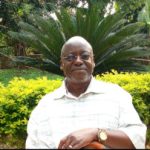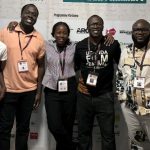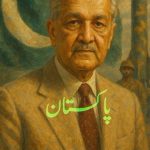TRACING THE GENEALOGY OF THE MOTHER CHARLES AFUNADUULA-OVUMA NGOBI ISABIRYE: 1923–2007
By Oweyegha-Afunaduula
Conservation Biologist
Center for Critical Thinking and Alternative Analysis
This article traces the genealogy of the mother of Charles Afunaduula-Ovuma Ngobi Isabirye, Mukyala Nabirye Takoba. She got married to Yakobo Wasedde Buganga Isabirye, of the Mulawa Clan, who was a subcounty clerk and one of the few educated people of his time. They both belonged to and identified with a village called Bunafu in Ikumbya Subcounty of Luuka County (now Luuka District) on land given to Wasedde Buganga for his dedicated service to the colonial government. They produced Constantine Wekiya Ngobi Isabirye and Nangobi in addition to Charles Afunaduula-Ovuma Ngobi Isabirye. Gwaira II and Nangobi Waboneka II.
Genealogy of Charles Afunaduula-Ovuma Ngobi Isabirye
The late Charles Afunaduula-Ovuma Ngobi Charles was a son of the Late Yakobo Buganga Wasedde Musubo of Namansa I of Wekiya I of Oweyegha I of Muganhywa I of Ovuma I of Oteesa I of Mulawa II of Kabitanhya I of Gwaira I. His mother was called Tabuuza Mukyala Takoba, a Princess of the Ngobi Clan of Kinu in Bugabula. She was a daughter of Prince Kitimbo II Eronda of Mbalule of Nairika of Munyhiirwa of Kitimbo I of Gabula I of Mukama who came from Kitalaigulu in Bunyoro. She died in 1960 at Kinu and she was buried on the land of another man because she had separated with Wasedde Buganga. Oweyegha-Afunaduula, one of her many grandchildren, who was in Primary Four when she died, attended her funeral.
Some of the children of Charles Afunaduula-Ovuma Ngobi Isabirye have names from the ancestral lineage of his mother. They include names such as Nadiope, Nabirye, Tabuuza, Mukyala, Takoba, Nairuba, Kabooga, Kitimbo, Naika, Kitamirike, etc. He produced so many children that when he named the maximum number with Mulawa Clan names at Bulawa, Nawaka, he asked the Clan to allow him to give some of his children names from the lineage of his mother, Mukyala Nabirye Takoba. The name Takoba seems to have come from the lineage of her mother.
Who was Charles Afunaduula-Ovuma Ngobi Isabirye?
Charles Afunaduula-Ovuma Ngobi Isabirye was an influential man in Busoga during the reign of Kyabazinga Kadhumbula Gabula Nadiope II from 1962 to 1966 when President Apollo Milton Obote abolished the Kingdoms of Ankole, Buganda, Bunyoro, and Toro and the Territory of Busoga semi federal status in 1966.
He exhibited many aspects of himself throughout his life: Fervent learner, soldier, footballer, musician, farmer, cooperator, medical assistant, polygamist, court assessor (jurist), politician, Chairman Land Board (Iganga District), Chairman Busoga Education Committee.
As a politician, he represented his people of Ikumbya Subcounty to the Busoga Council (Lukiiko or Parliament) from the late 1950s. He was also one of the founder members of the Uganda National Congress (UNC) and later the Uganda Peoples Congress (UPC). Eventually, he rose to the political office of Speaker of the Busoga Lukiiko when Busoga was one whole and only consisted of 11 Hereditary Counties of Bugabula, Bukono, Butembe, Bugweri, Bukooli, Bulamogi, Bunyha, Busiki, Bunyhole, Kigulu and Luuka.
It should be remembered that historically Busoga became one unitary political entity by the artwork of a Bunyoro prince called Ndahura Byaruhanga who established 7 county chiefdoms (Bugabula, Bugweri, Bukooli, Busiki, Buzaaya, Kigulu and Luuka) around 1230. Thus, there were Bugabula of Gabula, Busiki of Kisiki, Bugweri of Menhya, Bukooli of Wakhooli, Kigulu, Luuka of Tabingwa and Buzaaya of Muzaaya.
However, before the colonialists captured Busoga and converted it into a colonial enclave, Kigulu was denied the status of hereditary county by the Chwezi rulers of Busoga at Nnenda Hill in Busambira who belonged to the Igaga Clan. They regarded Kigulu as the seat of their power and did not want to see another ruler in the kraal. Some of the Kings of Busambira are: Kisambira Busumwa, Kisambira Izizinga, Kisambira Lukakamwa and Kisambira Ntakambi Wabiwa Taliyuwula, who ruled up to 1936. Kintu Bidiba, who was supposed to succeed Ntakambi, was poisoned and he died in May 1936.
It was the colonialists who lifted Kigulu, alongside Bulamogi, Butembe, Bukono, Bunyhole and Butembe to the status of hereditary counties, but abolished Buzaaya hereditary Chiefdom, creating Butembe out of it and transferring parts of it to Bugabula Hereditary Chiefdom. So, Busoga, by colonial design, got Ngobi of Kigulu, Nkono of Bukono, Zibondo of Bulamogi, Waguma of Butembe, Nanyhumba of Bunyhole and Luba of Bunyha while erasing Muzaaya of Buzaaya from the list of Chiefs of Busoga.
The colonialists converted Bulamogi and Bukono to hereditary chiefdoms, but these two were previously part of Busiki hereditary Chiefdom. It was Kisiki Nantamu, the ruler of Busiki who had allowed two brothers (Nkono and Zibondo) from Gogonya in Bugwere to establish their own territorial powers; hence Bukono for Nkono and Bulamogi for Zibondo. It was easy for the colonialists to baptise them hereditary chiefdoms because no one was claiming sovereignty over them. Meanwhile the colonialists excised Bunhyole from Bunyha to get two hereditary chiefdoms: Bunyha and Bunhyole.
It should be remembered that before the arrival of the colonialists, the chiefdoms that existed were established by a Bunyoro Kitara Prince, Ndahura Byaruhanga, around 1230. The rulers at Nnenda Hill introduced a Busoga Lukiiko, which was presided over by a Kyabazinga who always came from Kigulu County. He was equivalent to the Katikiiro of Buganda.
The British colonialists shifted the Busoga Lukiiko from Nnenda Hill to Bukaleba in Mayuge, previously part of Bunyha hereditary Chiefdom, in a degrading strategy to render the power that be at Nnenda inconsequential to their new status quo in Busoga, and established what they called The Presidency of Busoga Lukiiko with militarist Semei Kakungulu from Koki as the First President of the Lukiiko. He was succeeded as President of the Busoga Lukiiko in 1935 by Zibondo Wako of Bulamogi.
The Lukiiko was composed of the hereditary chiefs of Busoga. Later, some members were directly elected by the people to represent them in what came to be known as Busoga District Council because between 1935 and 1962 Busoga was ruled by the colonialists as a District of their evolving British Uganda Protectorate.
By the time Charles Afunaduula-Ovuma Ngobi Isabirye became the Speaker of Busoga Lukiiko in 1962, the Hereditary Chiefs were still unelected members of the Busoga Lukiiko just as they were under the Chwezi rulers at Nnenda Hill and under the Presidency of Semei Kakungulu. When the colonialists captured Busoga, converting it into a colonial enclave, the hereditary Chiefs became employed workers of the colonial government, drawing a monthly salary and they continued to be the members of the Lukiiko and rulers of their chiefdoms on behalf of the colonial government. The rest of the members of the Lukiiko were elected by the people to represent them. Therefore, members of the Ngobi Clan were largely in charge of Busoga apart from the chiefs of Busiki, Bukono, Bulamogi, Butembe, Bunyhole and Bunyha.
There is a historical account that claims that the Ngobi came to Busoga as soldiers of the Bunyoro Prince Ndahura Byaruhanga who was the original architect of the area as one political unit under county chiefs and later with a King at Nnenda Hill in Busambira, Kigulu. The historical account goes that Ndahura established the counties as he moved through the vast area of Busoga initially establishing counties and assigning some of his soldiers to the counties he established, except Busiki, which he assigned to his brother-in-law Kisiki, whose clan is not known to this day. Elsewhere in this article the chiefdoms Ndahura established were Bugabula, Bugweri, Bukooli, Busiki, Buzaaya, Kigulu and Luuka. Around 1230 he made all of them hereditary chiefdoms except Kigulu as explained above. Most historical accounts of Busoga skip mentioning this history, although we know Bachwezi have existed in Kigulu for centuries.
The Ngobi Clan
The historical account, which members of the Ngobi Clan in Busoga are comfortable with, and which my father Charles Afunaduula-Ovuma Ngobi Isabirye narrated to me in 2007 before his death on 25 December that year, is that the Ngobi came from Bunyoro at a time when there were feuds among the ruling Clans there. According to Afunaduula Ovuma, when they arrived the Ngobi first settled at a place called Kagulu in Iyingo. The first to arrive were Kitimbo I Mawerere and Kadhumbula I Gabula.
The Ngobi reproduced profusely and spread in places like Ndalike, Kinu and Naminage in Bugabula. They established the Kingdom of Bugabula. At Naminage it was the Houses of Kagoda I Nadiope II family and Mutiibwa I Naika I family that settled.
Families of the Ngobi Clan that Arrived in Busoga from Bunyoro
The table below shows where the other arriving families of the Ngobi Clan settled:
- Naika – Namwendwa
- Ntende – Butende
- Wanume – Buwanume
- Bwanga – Gwase
- Katasswa – Butansi
- Ndegeya – Namusikizi
- ? – Kinabitakali
- Nyende – Buyende
- Nuwake – Nawanambogo
- Maghimbi – Balawoli
- NaImanyhe – Namalemba
- Nadiope II Kadhumbula – Budhumbula
- Waiswa – Buwaiswa
- Makkeremalobe, Kiwudhu – Buzibirira
- Mugulusi – Bugulusi
- Muzaaya – Buzaaya
- Muluya – Buluya
- Katalo – Kasozi
- Aloota – Buyonga, Nyongo
- Ifuba – Kitayungwa
- Gabula – Kinu
These families had their chief spirits located at Iyingo, Butimbidho, and also at Nawandyo. However, the whole of Busoga today has the following major spirits: Kiira, Budhagaali, Waitambogwe (Luuka), Iyingo (Kagulu), Wabira, Nkwalu (Buwanume), Lwebandha (of Mulawa Clan), and Kalulu (of Musubo Clan). As indicated elsewhere, each clan has its own spirit.
It is possible to follow up the Ssaza (or county) chieftainships in what came to be Bugabula Kingdom. According to Afunaduula-Ovuma Ngobi Isabirye’s unpublished memoirs (1994), these were:
- Kitimbo of Iyingo
- Mawerere Son of Kitimbo
- Kagoya of Irumba House
- Nadiope II of Mwase House
- Gabulankyo of Mugweri Bambo
- Kadhumbula I of Igaga Kalulu
- Mutiibwa of Kisikwe
- Naika of Kisige
- Nadiope Yosiya of Muwaya
- Kadhumbula II Nadiope IV of Nadiope III Yosiya
Kadhumbula II Nadiope IV became the Kyabazinga of Busoga in the very early 1950s, was replaced by Wako Muloki of Zibondo House in Bulamogi, and became Kyabazinga again in the early 1960s. He died on 10 June 1971, after he had been incarcerated by Apollo Milton Obote’s Government, which he had participated actively to put in power. He had even served as Vice-President of Uganda, second only to Kabaka Mutesa II who was the President of Uganda. Obote claimed that Nadiope II had plotted with Kabaka Mutesa II to overthrow the government of Uganda, which was considered treason.
Nadiope II was succeeded as hereditary chief of Bugabula by Dr. Kadhumbula III Nadiope V, who became a Minister in Museveni’s first Government in the late 1980s but died shortly after. Wako Muloki, whom Kadhumbula II Nadiope had replaced as Kyabazinga, again became the Kyabazinga of Busoga in early 1994.
Tracing the Genealogy of Afunaduula-Ovuma Ngobi Isabirye’s Mother, Mukyala Nabirye Takoba
We can trace Afunaduula-Ovuma Ngobi Isabirye’s mother’s ancestry more closely to the House of Prince Munyhiirwa, the son of Gabula at Kinu. The following are the names of the members of this house:
- Mbalule
- Bwamiki
- Bwana Makoma
- Ssekibobbo Wavakumuti
- Lwaidho Balidha
- Mawanda Ibanda
- Mawerere II Kitamirike
Ssekibobbo begot Erika Ntende, Kawongolo, Katonda, and Mwigombe.
Mukyala Nabirye Takoba was in the genealogical lineage of Mbalule. The children of Mbalule, the firstborn of Munyhiirwa, are listed as:
- Kitimbo II Eronda
- Kagoda II
- Mugweri
- Kiyenge
- Kabooga
- Mukyala Nabirye
- Tabuuza Nabirye
- Kabaale
- Mudumba
Conclusion
The Ngobi Clan has a long history. The only historical account that attaches dates to movements and settlements of the members of the clan in Busoga is the one which links them to Prince Ndahura Byaruhanga, credited for establishing a Chwezi Igaga dynasty at Nnenda Hill in Busambira, Kigulu.
Indeed, the first colonialist to sign an agreement with any authority in Uganda did so in Busoga in 1894 with the King at his headquarters at Nnenda Hill. Some of the rulers at Nnenda Hill mentioned in this article are Kisambira Busumwa, Kisambira Izizinga, Kisambira Lukakamwa, and Kisambira Ntakambi Wabiwa Taliyuwula, who ruled up to 1936. Kintu Bidiba, who was supposed to succeed Ntakambi, was poisoned and he died in May 1936. By the time the British colonialists desecrated the Kingdom of Busoga, 38 rulers had reigned at Nnenda Hill.
It is rumoured that one powerful politician in Busoga grabbed the list of the rulers which showed when they ruled and hid it away. It is important that the list is retrieved because it is part of the cultural heritage of Busoga. The Igaga Clan should not rest until it has got it back.
Further research is needed to unearth more about the history of the Ngobi Clan. The surviving members of the Ngobi Clan should now be able to trace their own genealogies. I am sure there is no other written history of the clan as revealing as the one I have unravelled here.
I am happy I have been able to pass on what my father passed on to me, with the hope that I would also be able to pass it on. I stand between the Igaga clan and Ngobi Clan because my mother’s maternal roots are in the Igaga Clan and my father’s maternal roots are in the Ngobi Clan.
For God and My Country.
Further Reading
Oweyegha-Afunaduula (2023). The History of Busoga and the Concept of Natural Belonging. Ultimate News, November 13 2023
https://ultimatenews.co.ug/2023/11/oweyegha-afunaduula-the-history-of-busoga-and-the-concept-of-natural-belonging/ Visited on 20 July 2025 at 12:42 pm EAT.
Oweyegha-Afunaduula (2023). The Political Governance of Busoga: Past, Present, and Future. Ultimate News, November 20 2023
https://ultimatenews.co.ug/2023/11/oweyegha-afunaduula-the-political-governance-of-busoga-uganda-past-present-and-the-future/ Visited on 20 July 2025 at 12:47 pm.
Genealogical List (from Table 4)
- Kitimbo II Eronda
- Kagoda II
- Mugweri
- Kiyenge
- Kaboga
- Mukyala Nabirye
- Tabuzza
- Nabirye Norah
- Kabaale
- Mudumba
This post was created with our nice and easy submission form. Create your post!





